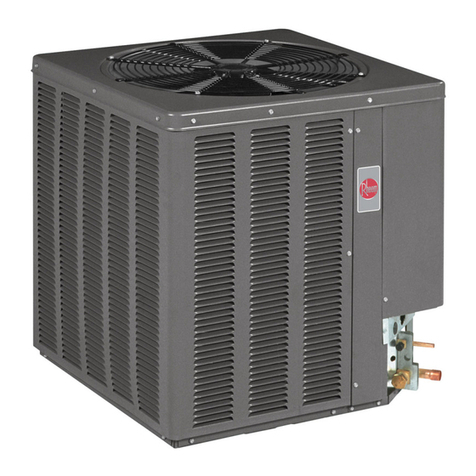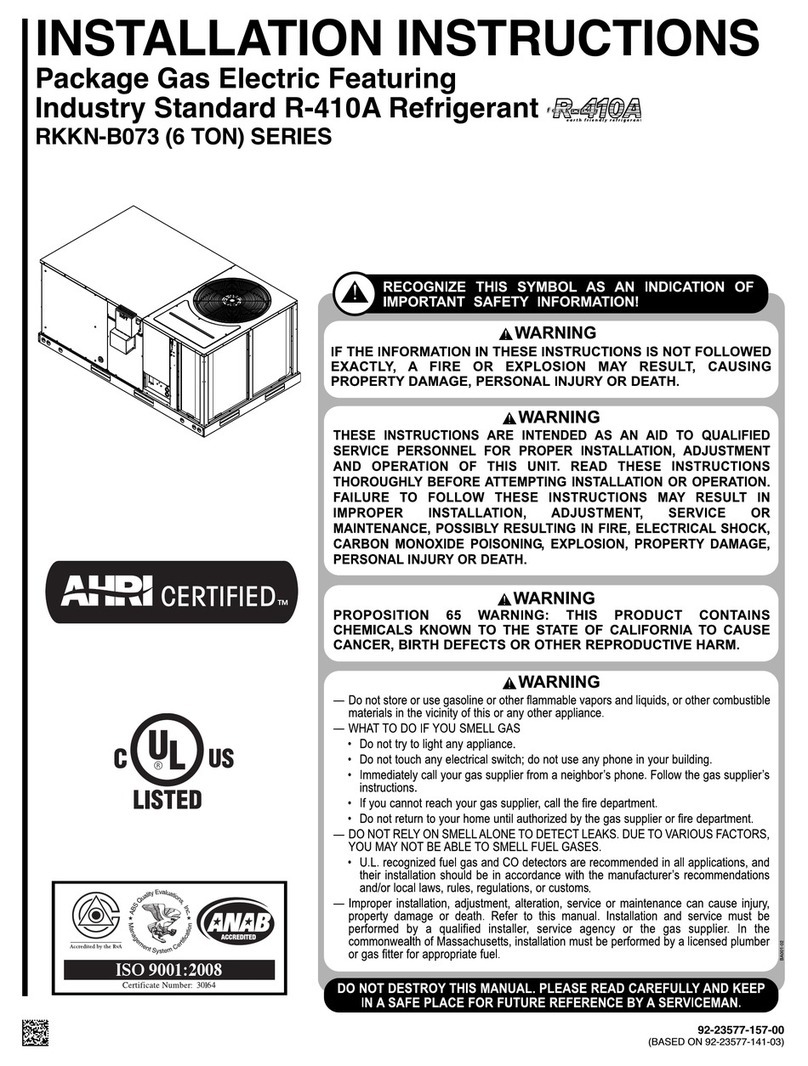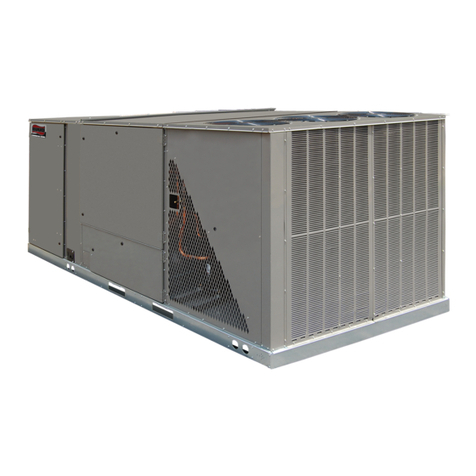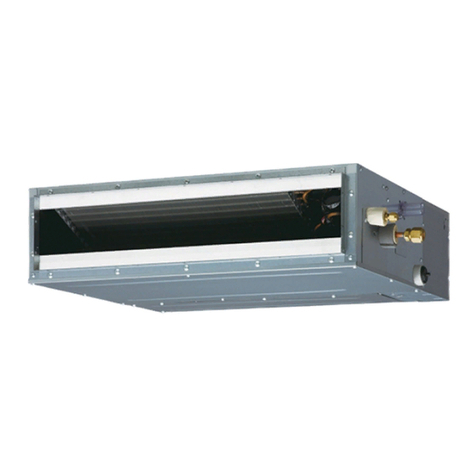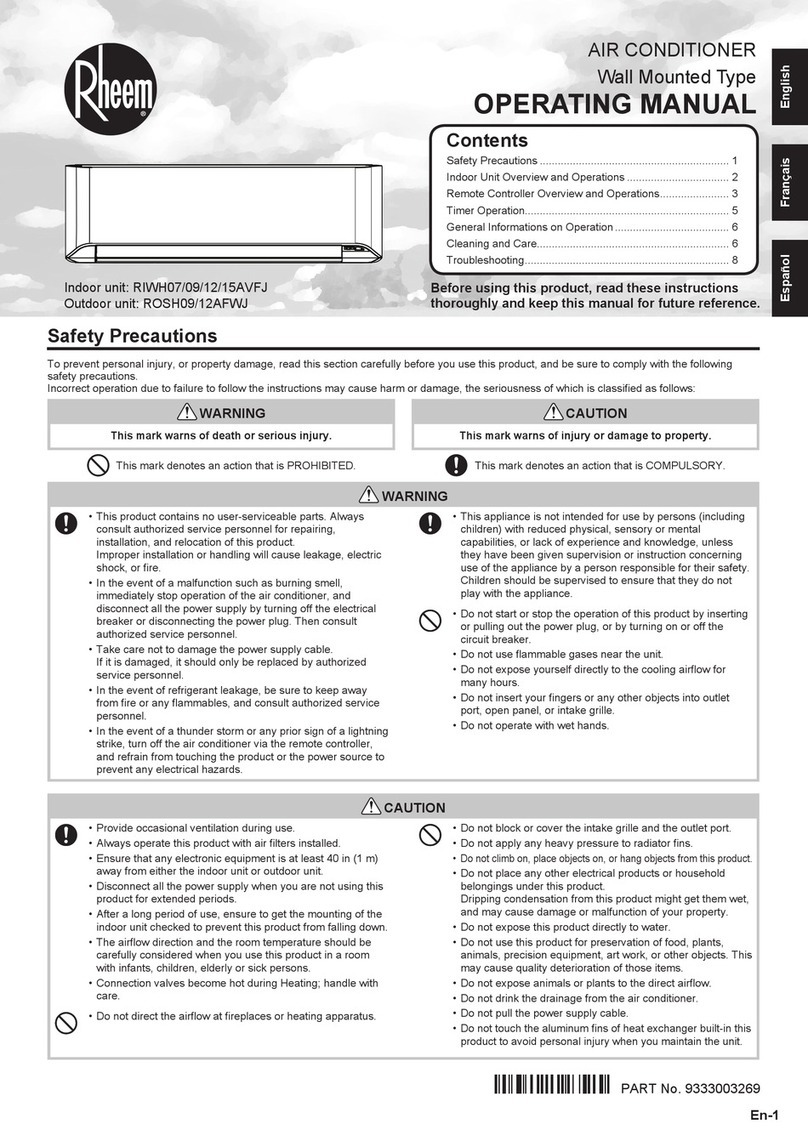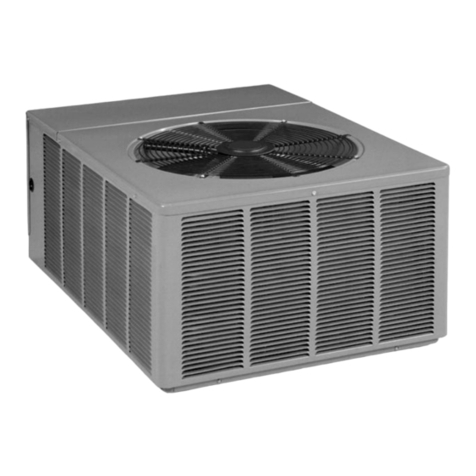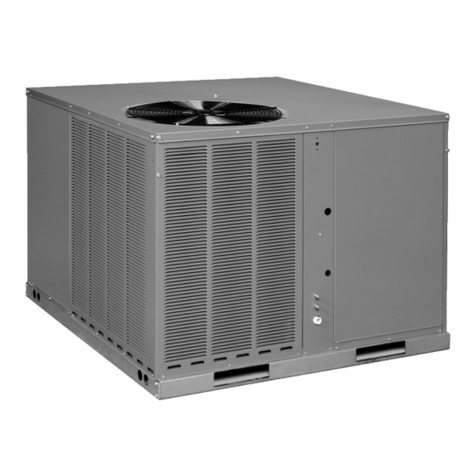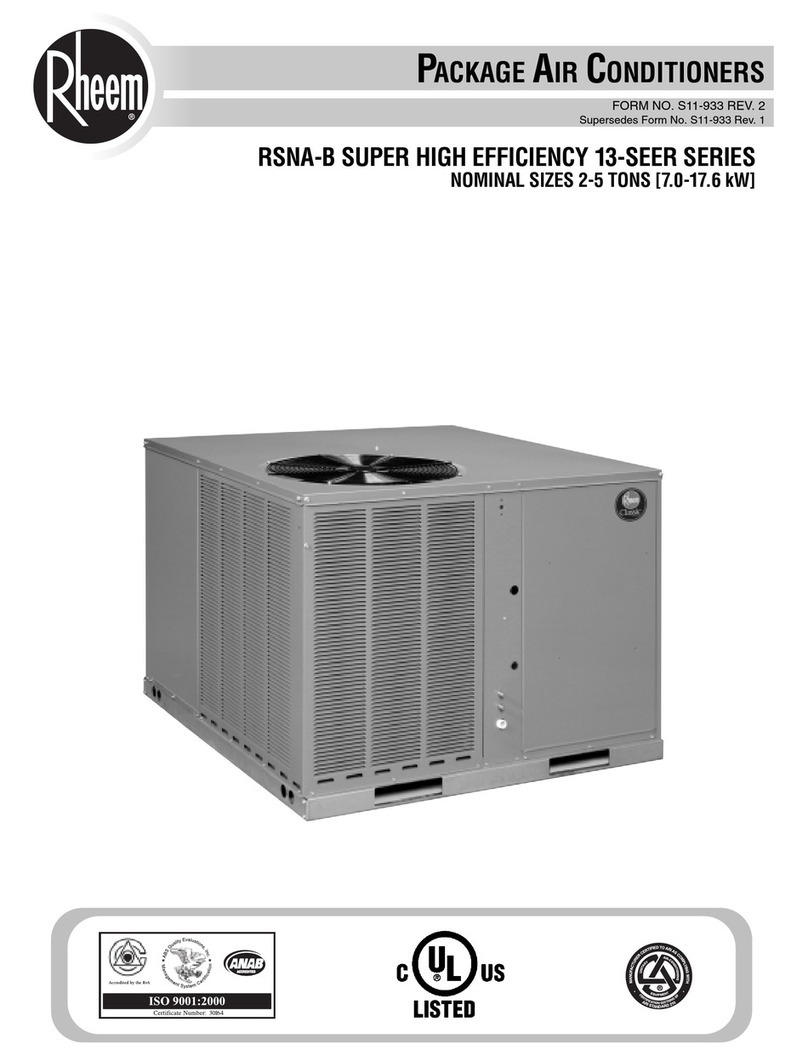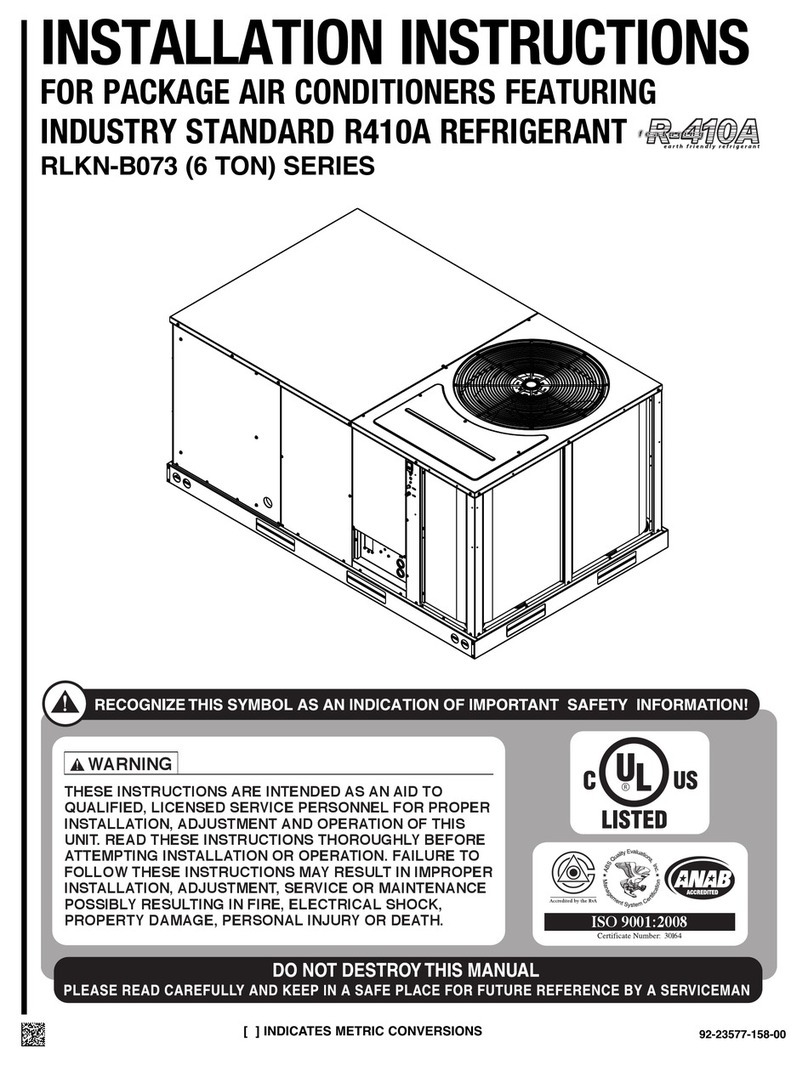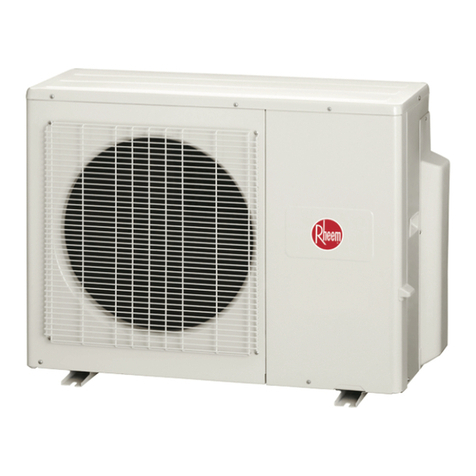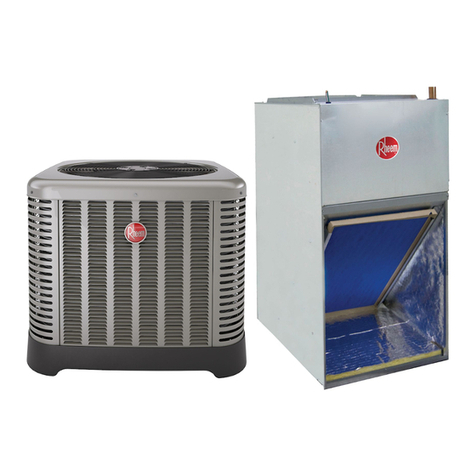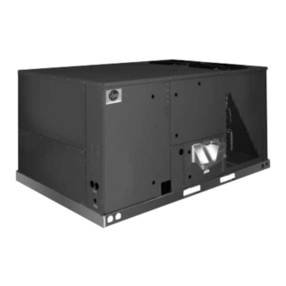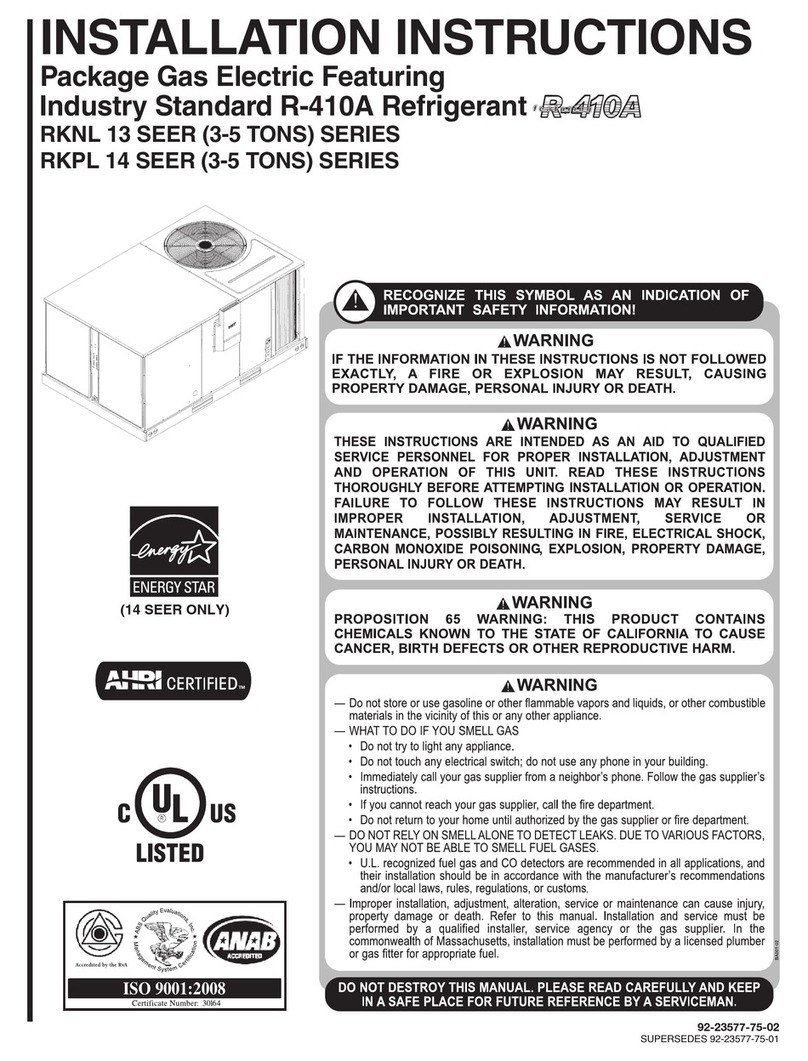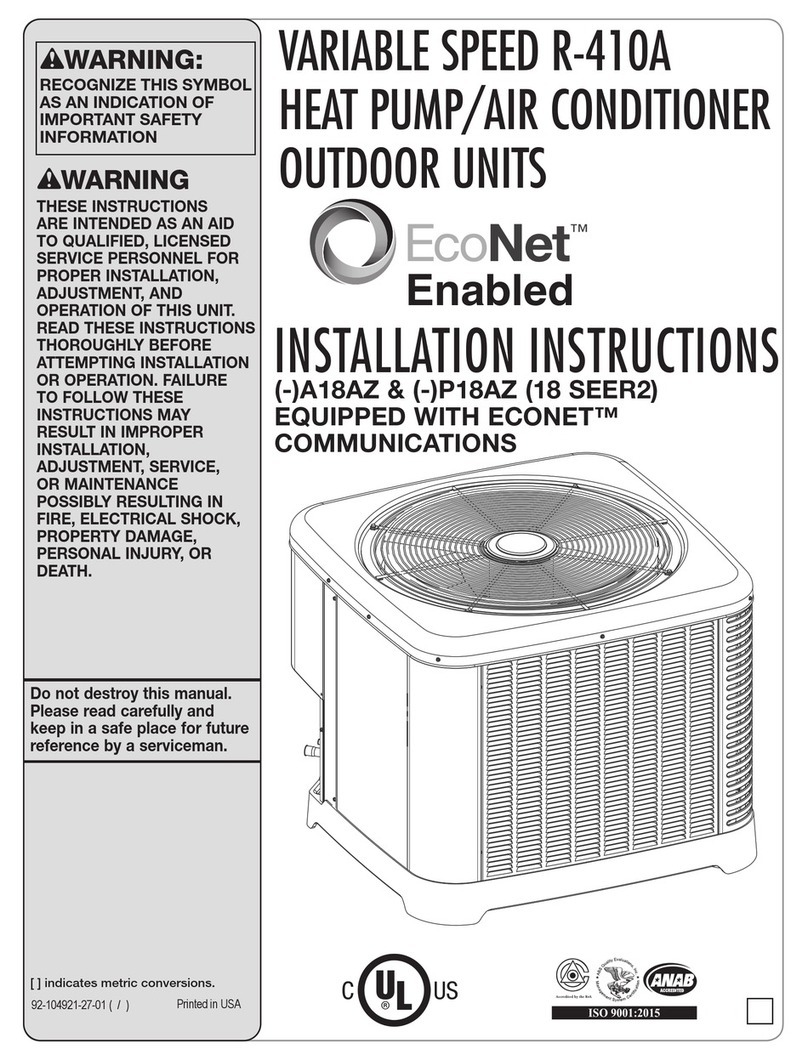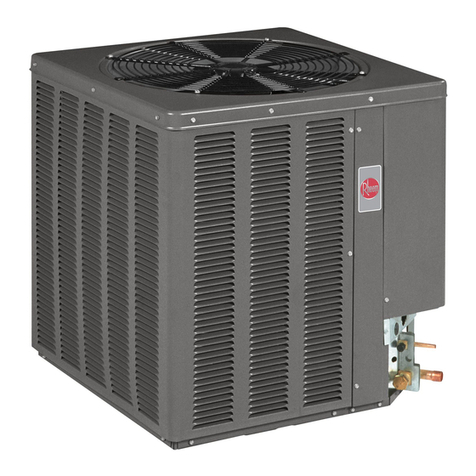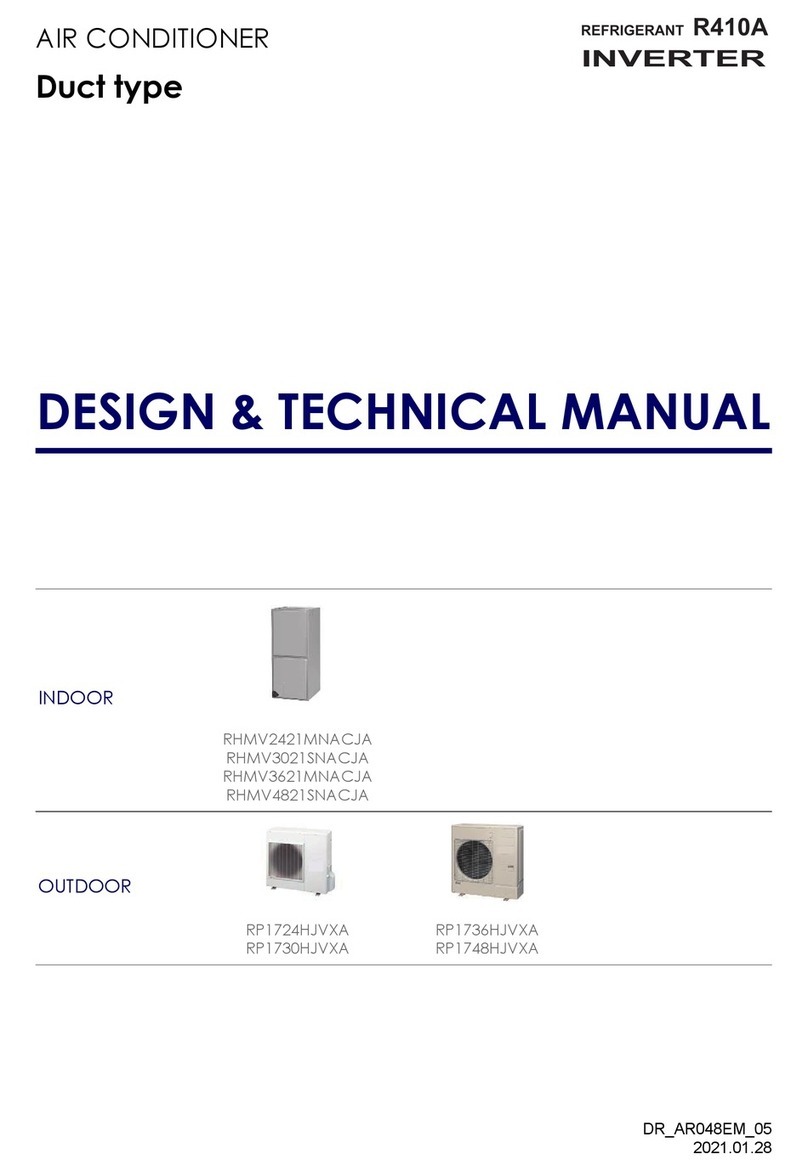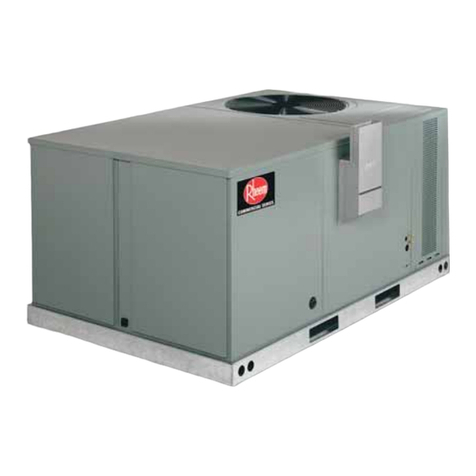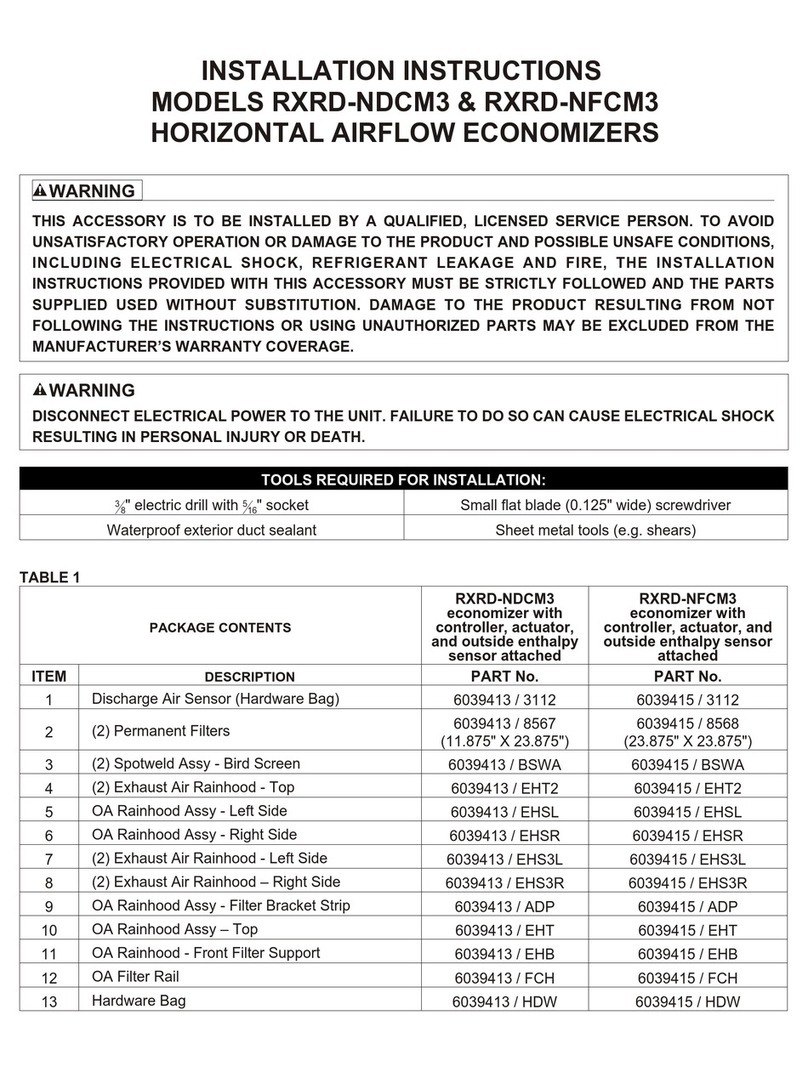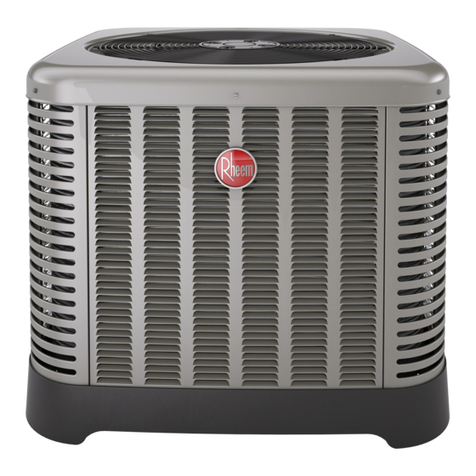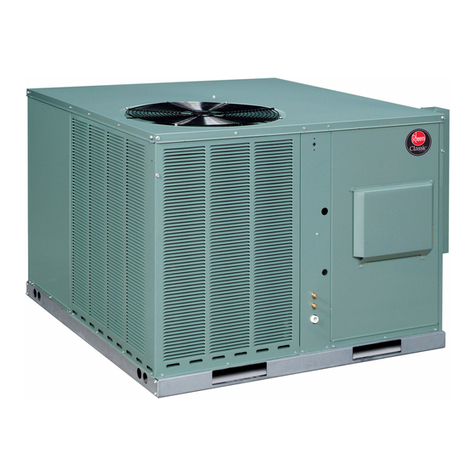2
INTRODUCTION I. SPECIFICATIONS
TABLE OF CONTENTS
!WARNING
Page No.
I. SPECIFICATIONS
Components 2
Unit Dimensions 3-5
Electrical & Physical Data 6-10
II. INSTALLATION
General 11
Location Considerations 11
Exhaust & Combustion
Hoods 12
Cover Panel Installation 12
Clearances 13
Rooftop 14
Ducting 14-15
Return Air 15
III. GAS SUPPLY & PIPING 16-18
IV. ELECTRICAL WIRING
Power Supply 19
Hook-up 20
Internal Wiring 20
Thermostat 20
V. FURNACE CONTROLS 21-23
VI. OPERATION INFO 23-24
VII. AIRFLOW 25-26
VIII. TROUBLESHOOTING 27-29
IX. WIRING DIAGRAMS 30-33
X. CHARGE CHARTS 34-36
XI. WARRANTY 40
THE MANUFACTURER’S WARRANTY
DOES NOT COVER ANY DAMAGE OR
DEFECT TO THE AIR CONDITIONER
CAUSED BY THE ATTACHMENT OR
USE OF ANY COMPONENTS,
ACCESSORIES OR DEVICES (OTHER
THAN THOSE AUTHORIZED BY THE
MANUFACTURER) INTO, ONTO OR IN
CONJUNCTION WITH THE AIR
CONDITIONER. YOU SHOULD BE
AWARE THAT THE USE OF
UNAUTHORIZED COMPONENTS,
ACCESSORIES OR DEVICES MAY
ADVERSELY AFFECT THE
OPERATION OF THE AIR
CONDITIONER AND MAY ALSO
ENDANGER LIFE AND PROPERTY.
THE MANUFACTURER DISCLAIMS
ANY RESPONSIBILITY FOR SUCH
LOSS OR INJURY RESULTING FROM
THE USE OF SUCH UNAUTHORIZED
COMPONENTS, ACCESSORIES OR
DEVICES.
This booklet contains the installation and
operating instructions for your
combination gas heating/electric cooling
unit. There are some precautions that
should be taken to derive maximum
satisfaction from it. Improper installation
can result in unsatisfactory operation or
dangerous conditions.
Read this booklet and any instructions
packaged with separate equipment
required to make up the system prior to
installation. Give this booklet to the
owner and explain its provisions. The
owner should retain this booklet for
future reference.
CHECKING PRODUCT
RECEIVED
Upon receiving the unit, inspect it for any
damage from shipment. Claims for
damage, either shipping or concealed,
should be filed immediately with the
shipping company. IMPORTANT: Check
the unit model number, heating size,
electrical characteristics, and
accessories to determine if they are
correct.
A. GENERAL
The Combination Gas Heating/Electric
Cooling Rooftop is available in 250,000
AND 350,000 BTUH heating input with
nominal cooling capacity of 15 tons.
300,000 and 400,000 BTUH heating inputs
are available in nominal cooling capacity of
20 & 25 tons. Units are convertible from
bottom supply and return to side supply
and return by relocation of supply and
return air cover panels. See cover
installation detail and Figures 10 &11.
The units are weatherized for mounting
outside of the building.
UNITS ARE NOT DESIGN CERTIFIED TO
BE INSTALLED INSIDE THE
STRUCTURE. DOING SO CAN CAUSE
INADEQUATE UNIT PERFORMANCE AS
WELL AS PROPERTY DAMAGE AND
CARBON MONOXIDE POISONING
RESULTING IN PERSONAL INJURY OR
DEATH.
B. MAJOR COMPONENTS
The unit includes a hermetically-sealed
refrigerating system consisting of a scroll
compressor, condenser coil, evaporator
coil with capillary tube assembly or TXV, a
circulation air blower, a condenser fan, a
heat exchanger assembly, gas burner and
control assembly, combustion air motors
and fan, and all necessary internal
electrical wiring. The cooling system of
these units is factory-evacuated, charged
and performance tested. Refrigerant
amount and type are indicated on rating
plate.
!WARNING
